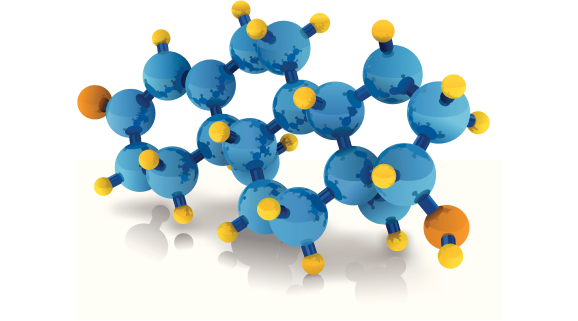Prostate Cancer
If you have prostate cancer, you are not alone – approximately 220,000 men are diagnosed in the United States each year. In fact, other than skin cancer, prostate cancer is the most commonly diagnosed cancer among men. However, it is one of the most treatable, if detected early.

Through our multidisciplinary Prostate Cancer Center of Excellence, your care team can help you weigh the benefits of each treatment and help you decide which is best for you.
Prostate Treatment Options
- Active Surveillance
- Radiation Therapy
- Proton Therapy
- IMRT
- Brachytherapy
- Radionuclide Therapy
- Prostate Cancer Surgery

Active Surveillance or Watchful Waiting
Active surveillance for prostate cancer is a management approach where men diagnosed with low-risk prostate cancer are monitored closely with regular check-ups and tests instead of undergoing immediate treatment.
Prostate Radiation Therapy
Radiation therapy for prostate cancer is a type of treatment that uses high-energy radiation to kill cancer cells in the prostate gland. Radiation can be delivered externally (such as with proton therapy) or internally (such as with brachytherapy).
Radiation therapy is typically used to treat localized prostate cancer, where the cancer has not spread beyond the immediate area of the prostate gland. It may also be used in combination with other treatments, such as hormonal (testosterone) blockade therapy, for more advanced prostate cancer.
The specific risks and benefits of radiation therapy will depend on the individual patient and the type of radiation therapy used. Follow-up appointments with a healthcare provider will be necessary to monitor the effectiveness of the treatment and any potential side effects.

Proton Therapy
This type of therapy is the most conformal form of radiation treatment available and uses protons to precisely target the prostate while avoiding most of the surrounding healthy tissue and organs.
Intensity-Modulated Radiation Therapy (IMRT)
IMRT is a type of X-Ray based radiation treatment that focuses multiple radiation beams of different intensities directly on the tumor for the highest possible does of radiation.
Brachytherapy
Brachytherapy may be given as a one-time treatment (LDR) or over several days (HDR).
Radionuclide Therapy
This type of radiation therapy is administered through an IV. It. is used to treat prostate cancer bone metastases (prostate cancer that has spread to the bones).
Prostate cancer treatment options encompass active surveillance, radiation therapy, surgery, hormone therapy, and in advanced cases, chemotherapy and immunotherapy. The choice of treatment depends on cancer stage, aggressiveness, and patient health. Treatment decisions prioritize factors like potential side effects and quality of life, often made collaboratively between patients and their healthcare team.
Prostate cancer surgery Options
with prostate cancer. There are several types of prostate surgery, including:
Radical prostatectomy
In this procedure, the entire prostate gland is removed along with nearby lymph nodes. The surgeon may use open surgery or minimally invasive techniques such as laparoscopic or robotic-assisted surgery.
Transurethral resection of the prostate (TURP)
This procedure involves the removal of part of the prostate gland through the urethra using a special tool called a resectoscope. This procedure is typically used to treat non-cancerous enlargement of the prostate gland.
Transurethral incision of the prostate (TUIP)
This procedure involves making small incisions in the prostate gland to relieve pressure on the urethra caused by an enlarged prostate.

After the surgery, a catheter may be inserted to help drain urine from the bladder.
Prostate surgery carries risks such as bleeding, infection, and complications related to anesthesia. In addition, men who undergo prostate surgery may experience side effects such as incontinence, erectile dysfunction, and infertility. Rehabilitation programs such as pelvic floor exercises may help to alleviate these side effects. The specific risks and benefits of prostate surgery will depend on the individual patient and the type of surgery performed.
Hormone Therapy for Prostate cancer
prostate cancer hormone therapy criteria:
- Surgery or radiation is not possible
- Advanced prostate cancer. Hormone therapy may be used as a primary treatment for advanced prostate cancer that has spread beyond the prostate gland to other parts of the body, such as the bones or lymph nodes.
- Recurrent prostate cancer: Hormone therapy may be used to treat prostate cancer that has come back after initial treatment, such as surgery or radiation therapy.
- Pre-surgery treatment: Hormone therapy may be used before surgery to shrink the prostate gland and make it easier to remove. This is known as neoadjuvant therapy.
Main Types of Hormone Therapy
<span data-metadata=""><span data-buffer="">Antiandrogens
Antiandrogens block the action of testosterone on prostate cancer cells. Antiandrogens are used most often in combination with androgen synthesis inhibitors.
<span data-buffer="">Androgen synthesis inhibitors<span data-metadata="">
These drugs decrease the production of testosterone by the testicles. A common type of androgen synthesis inhibitor is luteinizing hormone-releasing hormone (LHRH) agonists. Because LHRH agonists are often associated with a temporary increase in testosterone levels, they may be combined with anti-androgen medications. Androgen synthesis inhibitors are delivered by injections, which last from one to six months, or by small pellets implanted under the skin.
Hormone (testosterone) Blockade
Hormone therapy for prostate cancer is a treatment that blocks or reduces the production of male hormones, specifically testosterone, which can stimulate the growth of prostate cancer cells. Hormone therapy is also known as androgen deprivation therapy (ADT).
Hormone therapy is typically used in combination with other treatments, such as radiation therapy, for intermediate or high-risk prostate cancer. It may also be used as a primary treatment for men with advanced or metastatic prostate cancer.

Other Types of Therapy
Chemotherapy
Chemotherapy for prostate cancer is a type of treatment that uses drugs to kill cancer cells. Unlike hormone therapy, which targets the male hormones that can stimulate the growth of prostate cancer cells, chemotherapy works by directly attacking the cancer cells themselves.
Cryotherapy
Cryotherapy for prostate cancer is a treatment that uses extreme cold to freeze and destroy cancerous tissue in the prostate gland. It is also known as cryosurgery or cryoablation.
High-intensity focused ultrasound (HIFU)
High-intensity focused ultrasound (HIFU) is a minimally invasive treatment option for prostate cancer that uses ultrasound waves to heat and destroy cancer cells in the prostate gland. During the procedure, an ultrasound probe is inserted into the rectum or urethra, and high-intensity ultrasound waves are focused on the prostate gland, heating and destroying the cancerous tissue while leaving surrounding healthy tissue intact.
Immunotherapy
Immunotherapy for prostate cancer is a type of treatment that uses the body’s immune system to fight cancer cells. The immune system normally recognizes and attacks foreign invaders in the body, such as viruses and bacteria. However, cancer cells can sometimes evade the immune system’s detection and attack.
prostate cancer treatment factors
- Stage and grade of cancer: The stage and grade of prostate cancer will determine the appropriate treatment options. The stage of cancer refers to how far it has spread, while the grade refers to how aggressive the cancer cells appear under a microscope.
- Age and overall health: Treatment options for prostate cancer will depend on the patient’s age and overall health. Older patients or those with other health conditions may not be able to tolerate certain treatments.
- Prostate-specific antigen (PSA) level: PSA is a protein produced by the prostate gland that can be measured with a blood test. Elevated PSA levels may indicate the presence of prostate cancer or other prostate conditions.
- Tumor size and location: The size and location of the tumor can impact the type of treatment that is recommended. For example, small tumors may be treated with active surveillance, while larger tumors may require surgery or radiation therapy.
- Patient preference: Patient preference can also play a role in treatment decisions. Some patients may prefer less invasive treatments, while others may opt for more aggressive treatments.
- Family history: Patients with a family history of prostate cancer may be at a higher risk for developing the disease and may require more vigilant screening.
- Response to treatment: The patient’s response to initial treatment can also impact subsequent treatment decisions. If the cancer does not respond to initial treatment, additional or more aggressive treatments may be necessary.
what is the best treatment option for prostate cancer?
Before pursuing any prostate cancer treatment, it’s crucial to consult with your doctor. Prostate cancer is a complex disease with various treatment options, including surgery, radiation therapy, hormone therapy, chemotherapy, immunotherapy, and watchful waiting. Each approach carries its own benefits and potential side effects, and the optimal treatment depends on factors such as the stage of cancer, your overall health, and personal preferences. Consulting with your doctor ensures that you receive personalized guidance tailored to your specific situation, helping you make informed decisions about the best course of action to manage your prostate cancer effectively.
